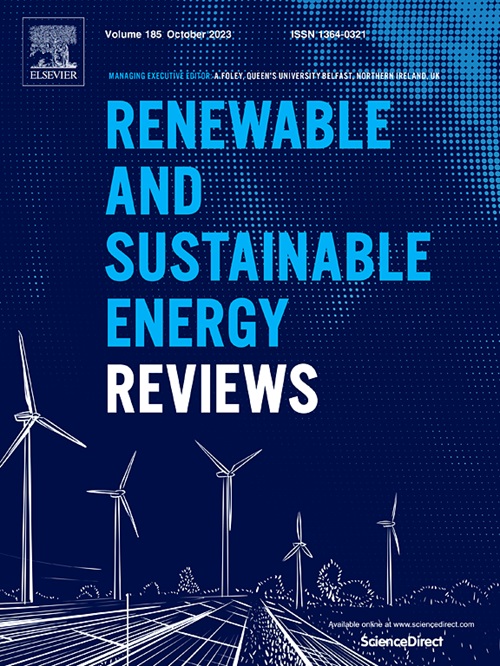Scenarios of sustainable energy transition towards the decarbonisation of the road transport sector: A case study for Mexico
IF 16.3
1区 工程技术
Q1 ENERGY & FUELS
引用次数: 0
Abstract
Worldwide, the reduction of carbon dioxide emissions from fossil fuels in the road transport sector is a climate change mitigation priority. This study provides an integrated assessment methodology applied to a case study of Mexico to propose sustainable energy transition alternatives for the long-term decarbonisation of the national sector. Energy modelling and scenario development methods to obtain holistic alternatives for the transition of this sector were conducted. Six scenarios were proposed to describe the energy consumption and the main CO2 trajectories considering environmental, socio-economic, technological, and governance aspects. The scenarios follow different pathways, from a Business-as-usual to a Net Zero, which were statistically analysed and validated. From 2018 to 2050, when a population of 144 million inhabitants is expected in the country, the first scenario leads to a 73.7 % increase in fossil energy consumption and 71.6 % in carbon emissions, whereas the Net Zero scenario suggests a possible reduction of 42.3 % and 89.9 %, respectively. In this scenario, the largest reductions in carbon emissions may be attained by fuel diversification, with electricity contributing 73.9 %, biofuels 9.2 %, hydrogen 8.2 %, less than 1 % of synthetic fuels and fossil fuels 8.7 %. Achieving decarbonisation targets would depend on: (i) a reduction in fossil fuels and energy demand; (ii) a gradual introduction of clean energy sources for low-carbon power generation; (iii) a societal behavioural change; (iv) a large investment in infrastructure, and (v) the updating of public policies to support a sustainable energy transition.

求助全文
约1分钟内获得全文
求助全文
来源期刊

Renewable and Sustainable Energy Reviews
工程技术-能源与燃料
CiteScore
31.20
自引率
5.70%
发文量
1055
审稿时长
62 days
期刊介绍:
The mission of Renewable and Sustainable Energy Reviews is to disseminate the most compelling and pertinent critical insights in renewable and sustainable energy, fostering collaboration among the research community, private sector, and policy and decision makers. The journal aims to exchange challenges, solutions, innovative concepts, and technologies, contributing to sustainable development, the transition to a low-carbon future, and the attainment of emissions targets outlined by the United Nations Framework Convention on Climate Change.
Renewable and Sustainable Energy Reviews publishes a diverse range of content, including review papers, original research, case studies, and analyses of new technologies, all featuring a substantial review component such as critique, comparison, or analysis. Introducing a distinctive paper type, Expert Insights, the journal presents commissioned mini-reviews authored by field leaders, addressing topics of significant interest. Case studies undergo consideration only if they showcase the work's applicability to other regions or contribute valuable insights to the broader field of renewable and sustainable energy. Notably, a bibliographic or literature review lacking critical analysis is deemed unsuitable for publication.
 求助内容:
求助内容: 应助结果提醒方式:
应助结果提醒方式:


